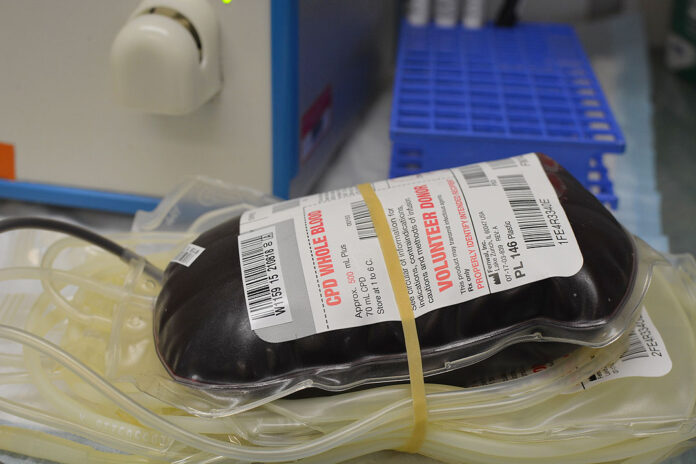By Brontë H. Lacsamana
BLOOD DONATIONS fell by around 29% to 365,000 units of blood in 2020 from more than 516,000 units of blood in 2019 due to on-and-off lockdowns and restricted mobility, according to Dr. Christie Monina M. Nalupta, director of the Philippine Red Cross (PRC) National Blood Services.
At a recent hematology conference, she reported that PRC collected 218,578 blood units from January to July of this year.
Dr. Nalupta hopes that the blood supply will bounce back from the past year’s difficult donor recruitment and decrease in staffing due to coronavirus disease 2019 (COVID-19).
With mobile blood donations down to once a week (if at all), PRC’s contribution to the national blood requirement fell to just 30–40% of the national blood requirement in 2020 from 50% in 2019, when blood drives were held two to three times a day yielding over 15,000 blood units daily.
Dr. Nalupta also attributed the decrease to the loss of young donors, aged 16 to 25, as a major source of blood collection: “Suddenly, because of online education and no face-to-face engagement in schools, there was a 12% drop in blood collection of youth in 2020 from 2019,” she said.
SUPPLY PROBLEM
Hospitals, too, are having trouble maintaining adequate blood supply, according to Dr. Rosalio P. Torres, president of the Philippine College of Hematology and Transfusion Medicine (PCHTM).
“Healthy donors were worried and scared to go to the hospital to donate at the blood bank,” he said in a Viber call with BusinessWorld, pointing to the virus as the number one cause for concern among potential donors. “The demand for blood hasn’t really risen. It’s the supply that’s the problem. The number of donors has precipitously gone down.”
Dr. Jesus A. Relos, hematologist at Makati Medical Center, quantified this as a 77% drop in blood donations in the second quarter of 2021 from the same quarter in 2020.
“Definitely it was still because of the pandemic scare, but also this time, vaccination was rolled out with a protocol of waiting 28 days before donating,” he said.
The Department of Health has since issued a circular this August allowing blood donation any time after receiving a COVID-19 vaccine if the donor is asymptomatic.
BLOOD MANAGEMENT
“Our strategy [to maintain blood supply] during lockdowns was to get blood from the network of different Red Cross facilities in the provinces,” said PRC’s Dr. Nalupta. “They share their blood supplies to the National Blood Center here in the National Capital Region, since we usually need more.”
The same goes for hospitals and blood banks who are part of a nationwide network as well, so that extra supply can be given wherever needed, said PCHTM’s Dr. Torres.
“Surgeries were canceled, deferred, or rescheduled around the start of the pandemic,” he said. “There’s no way you can ignore that problem. That led us to a call to action early on knowing this and anticipating this.”
Other strategies include media campaigns calling for blood donors, as well as partnering with companies who can either help spread the word or commit to a number of donation drives per year.
Still, the reliance on voluntary donors and blood drives leaves the blood supply in a precarious balance, forcing better ways to adapt, according to Dr. Ma. Angelina L. Mirasol, vice-president of PCHTM.
She advocated the use of patient blood management (PBM), defined by the Society for the Advancement of Patient Blood Management as an evidence-based, multidisciplinary approach to caring for patients who might need a blood transfusion.
Wasteful blood usage can be avoided with a perioperative plan of care to ensure all options are exhausted before resorting to surgery or transfusions, she said at a hematology conference this September.
When appropriate, patients can instead be given intravenous or oral iron supplements, among other methods as determined by their doctors.
PCHTM President Dr. Torres, on the other hand, recognized that the shift to a PBM approach would be difficult — albeit necessary — amid the pandemic: “Education is a very important part in the successful implementation of this program. It has to be a continuous dialogue with all the different departments in an institution.”
The advantages of PBM have been shown in various studies during the pandemic, which found reduced mortality and morbidity, shorter hospital stays, and lowered costs, according to Dr. Mirasol.
“Blood still saves lives, but we need to balance,” she said.

